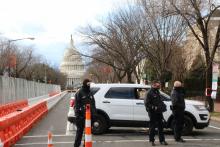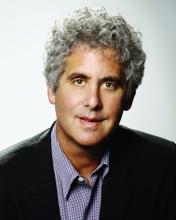On Jan. 6, 2021, Americans and the world witnessed a violent insurrection at the U.S. Capitol inspired by a president and other elected leaders and driven by lies, conspiracy theories, militias, and white supremacy. The violent insurrection was carried out by thousands of citizens, including many with weapons.
Psychiatric organizations condemned the attack and warned about the potential traumatic impact of these events on those directly involved as well as for others in the United States already living under anxiety and fear tied to the surging COVID pandemic.
A major challenge for U.S. society is to prevent other potential future violent attacks. For those who didn’t already know, the Capitol attack made it apparent that the United States faces major problems with white supremacists and domestic terrorism. FBI Director Christopher Wray stipulated that those involved in the Jan. 6 events were violent agitators and extremists.
Addressing the causes and preventing domestic terrorism is also a challenge and opportunity for psychiatry and other mental health professionals. I write as a psychiatrist in academic medicine who has spent more than 10 years advocating for public health approaches to the causes and consequences of violence, especially involving violent extremism. and that psychiatrists have a role to play as part of a whole-of-society coalition with other multidisciplinary practitioners and stakeholders.
Day by day, we learn more and more about those responsible for the insurrection and how to understand their motivations, intentions, and actions. Seditionists incite or commit acts of violence against a lawful authority with the goal of destroying or overthrowing it. Domestic terrorists commit violent, criminal acts to further ideological goals stemming from domestic influences, such as those of a political, religious, social, racial, or environmental nature. The mob that attacked the Capitol contained both. What’s more, the Capitol insurrection might inspire others to take similar actions. The risk for even broader and deeper radicalization to violence is a grave concern.
Aided by more than 100,000 tips, the FBI is conducting a massive nationwide manhunt and thus far, dozens of people have been charged with crimes. Given that the United States has no law that makes domestic terrorism a crime, they are being charged with other crimes. Upholding the rule of law is necessary, but it should not be regarded as sufficient to deal with the white supremacism and domestic terrorism threats.
In many countries all over the world, and to a much lesser extent in the United States, there are successful non–law enforcement programs helping people move away from domestic terrorism and other forms of violence. One example in the United States is Life After Hate, a nongovernmental organization that uses former white supremacist extremists to counsel people to leave the movement. Another example is the Colorado Resilience Collaborative, which takes a socioecological approach to prevent terrorism and targeted violence. At Boston Children’s Hospital, a regional prevention initiative is focused on reducing youth risk for targeted violence and terrorism by reducing mental health problems and increasing social belonging among adolescents. These are but three of several initiatives currently being conducted throughout the United States.
Over the past decade, I have had the opportunity to become familiar with several of these programs domestically and internationally. These include programs aimed at rehabilitating and reintegrating repatriated foreign fighters and their children and other family members all over the world, including in Kazakhstan. I would like to share some of the lessons learned from these programs to aid in preventing domestic terrorism in the United States.
One lesson learned from combating international terrorism is that intelligence and law enforcement strategies (hard counterterrorism) need to be balanced with civil society–led prevention strategies. Overreliance on hard strategies can harm individuals and communities through oversecuritization. Alternatively, we need to build civil society–led initiatives that focus on other levers, such as addressing the underlying conditions, including individual psychosocial and mental health dimensions, or social dimensions (for example, lack of opportunity), that mitigate a person’s involvement in violent extremism.
A second lesson is not to focus exclusively on ideology and deradicalization. Yes, we need to challenge extremist ideology and disinformation, but a wide range of different factors explains involvement in violent extremism and the many pathways into it. Using a socioecological model, we can identify modifiable risk and protective factors that mitigate for or against extremist violence (for example, family support, job prospects, untreated mental health problems). In addition, it is well-established that prevention programs should seek to disengage, not deradicalize, potential violent extremists.
Third, we should leverage existing evidence-based interventions and best practices in mental health and public health, but we should also invest in building and evaluating new models through research approaches, especially for secondary and tertiary prevention. As much as possible, these should be integrated into broader programs to improve individual and community mental health and health.
A fourth lesson is we must vigorously protect the human rights and civil liberties of individuals and communities involved in these programs, and uphold racial equity. We can learn from public health experts about how to engage vulnerable individuals and communities without adding to their stigmatization. One way is to not focus on single communities, and not just on ideologically motivated violence, but to build violence prevention programs that are broad enough to address multiple forms of violence.
Fifth, if we expect community-based organizations to do the work, then they need adequate resources, capacity building, training and supervision, and quality improvement activities to succeed. For example, psychiatrists and other mental health professionals will require additional training to learn how to work effectively and ethically in this space.
Psychiatrists can start by building their knowledge and skills in understanding violent extremism and how it can be assessed and addressed, which is not the same as for suicidality. Psychiatrists can also become involved in established or emerging violence prevention programs, such as threat assessment programs in schools, workplaces, and communities. Across the country, there is a need for building new secondary and tertiary violence prevention initiatives, and they will need psychiatrists to work with them. Academic psychiatrists can become involved in building the models, developing and delivering training, and designing and conducting the program evaluations.
Finally, I suggest that psychiatrists look at domestic terrorism prevention through the lens of public health and not overly “psychiatrize” the issue. A public health approach uses evidence-based programs and policies, addresses underlying causes, and focuses on prevention. Public health builds programs with teams of experts from across disciplines – educators, health care workers, mental health professionals, faith leaders, youth leaders, community advocates, peers, and law enforcement.
As part of a public health–oriented team, psychiatrists can contribute to addressing the grave challenges of domestic terrorism facing our nation today.
Dr. Weine is professor of psychiatry, director of global medicine, and director of the Center for Global Health at the University of Illinois at Chicago. He has no conflicts of interest.




